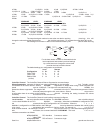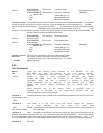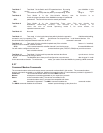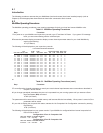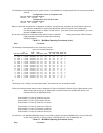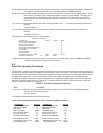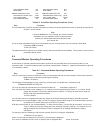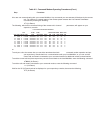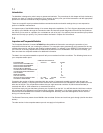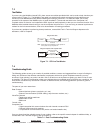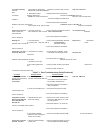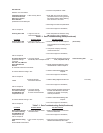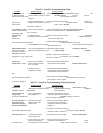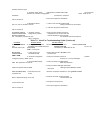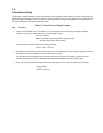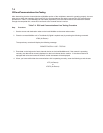7.1
Introduction
The MultiMux is designed to make it easy to operate and maintain. The procedures in this chapter will help isolate any
problem you have to a specific component of your network, at which point you will be instructed to call the appropriate
personnel or execute commands to adjust operating conditions.
There are no specific repair procedures besides command execution and switch settings that you are expected to
perform in MultiMux maintenance.
An important part of the MultiMux design is its remote diagnostic capabilities. Our Tech Support department personnel
can dial-up your MultiMux through the command modem and execute special diagnostics that will help find problems
fast. When youre stuck on a problem, do not hesitate to call us for help. Our staff may have encountered your problem
before and can help you quickly. Our phone numbers are listed in Chapter 8 of this manual.
7.2
Importance of Composite Statistics
The Composite Statistics Command AT#SA/B provides additional information concerning the operation of your
composite link that can aid you in testing for problems. The composite report generated by this command can be very
valuable when used in conjunction with Analog Loopback testing. For example, if your REMOTE DWN indicator is on,
you could run an Analog Loopback test to make sure the failure is not in the MultiMux. If the test runs correctly, you
then can check the composite statistics for additional information.
The data in the composite statatistics report will tell you more about line failure conditions. The following items are on
your composite status report:
COMPOSITE STATISTICS
ELAPSED TIME : 00 DAYS 00HRS 00 MIN.
DATA BLOCKS TRANSMITTED : 0
DATA BLOCKS RETRANSMITS : 0
DATA BLOCKS RECEIVED : 0
RECEIVE BLOCK ERRORS : 0
VOICE/FAX BLOCKS TRANSMITTED : 0
VOICE/FAX BLOCKS RECEIVED : 0
LINK ALARMS : 0
REMOTE DOWNS : 0
LINK UTILIZATION : 0%
RECEIVE FLOW CONTROL TIME : 00 HRS 00 MIN 00 SEC.
AUTOMATIC REPORTING : OFF 9600 BAUD
Comparing the number of blocks transmitted with the number of retransmits needed to get the data through can
indicate a line problem. Comparing the blocks received and receive block errors indicates the same problem from the
other end of the link. The comparative numbers that you might encounter could be 10,000 blocks transmitted (or
received) with 500 or 1000 retransmits (or receive block errors).
Link Alarms simply tell you that there are some sort of problems on the link. You will find that the Link Alarm numbers
will correspond to the Retransmit and Receive Block numbers. Specifically, a Link Alarm means that it has been 10
seconds since the MultiMux has received an acknowledgment. Normally, three acknowledgments will be received
during a 10 second period.
The Remote Down entry means that a MultiMux has sent data 30 times and could not get it through (the link has been
broken).
The other entries in the composite status report do not apply to link problems.



